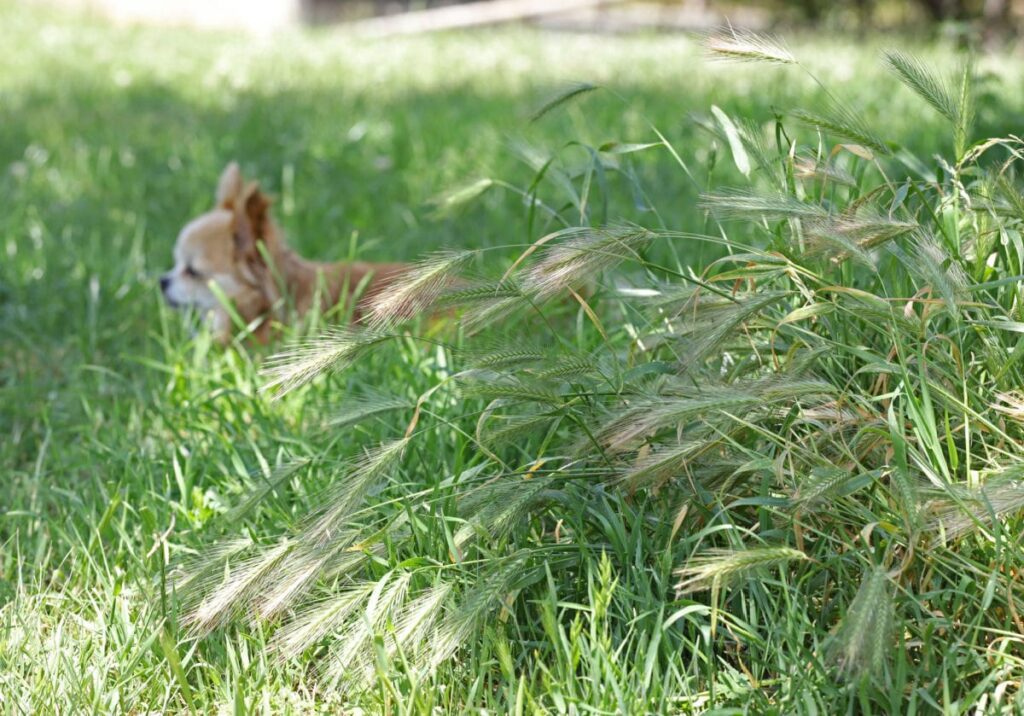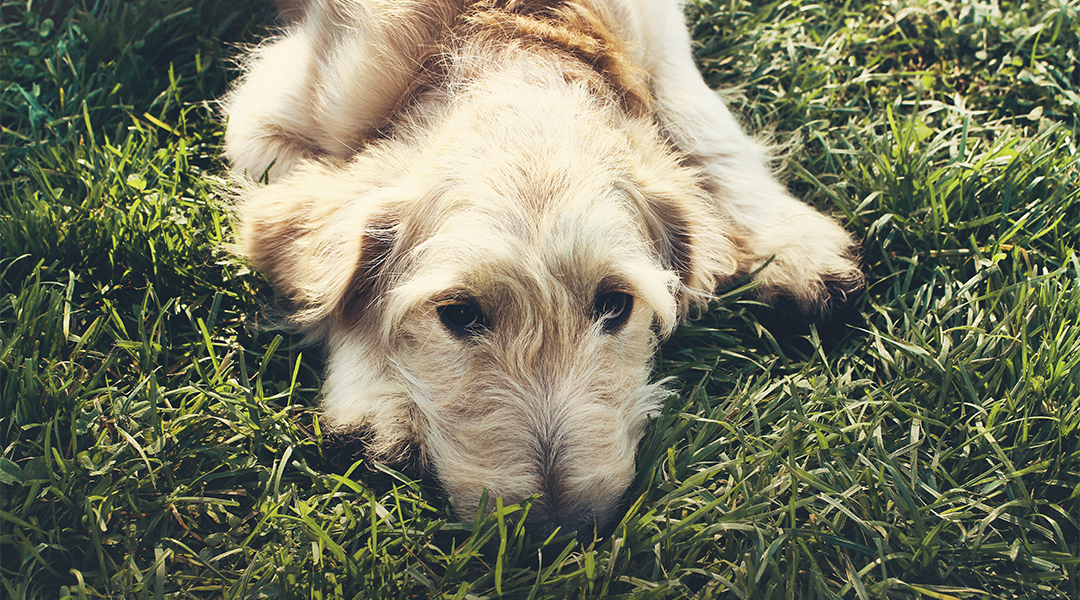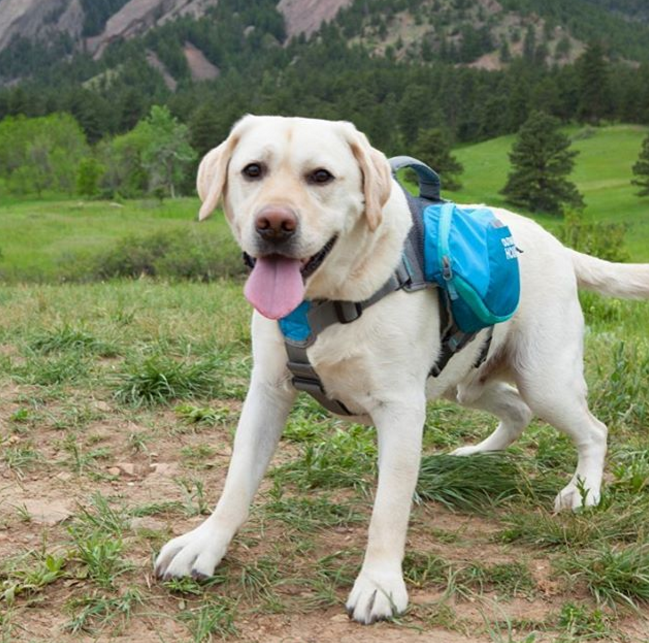Foxtails and Dogs: A Lethal Combination
The snow is gone and the summer months are fast approaching! The new season brings outdoor activities and off-leash exploring, but this also means it’s foxtail season. Before you venture out it’s important to read up on the harmful connection between foxtails and dogs.
Foxtails are no joke and can get caught in any part of your dog’s body from its paw pads to its eardrum. Before you hit the open trails, take action to prevent this pesky plant from hurting your pup!
Facts About Foxtails

Foxtails (alopecurus) are weedy grasses with spikey tops that are clusters of bristled seeds, also known as awns. They can be found in most of the United States and are especially common in California, on hiking trails, backyards, roadsides, and open fields.
How do foxtails get their name? Foxtails get their names because the spikey tops resemble the bushy tails foxes have. And yes, it is ironic that they’re named after something they can cause serious harm to.
Foxtail seeds are the quicksand of plants: once the grass seeds stick to something, it’s going in — not out. That’s what makes them so dangerous. Their job is to burrow into the soil until set in place, then grow again.
Thing is, foxtails can’t make the distinction between soil and a dog, so once they hook onto something, they’re going to do their job: burrow. This means bad news if one gets stuck in a dog’s ear, nasal passages, or anywhere else on their body. Read on.
Why Foxtails Are Dangerous
Foxtail barbs can get caught in your dog’s nose, coat, ear canal, eyes, armpits, mouth, and throat. They can also be painful when caught in your dog’s paws or your dog’s skin. According to the UC Davis School of Veterinary Medicine, foxtails that penetrate the skin can cause wounds and subcutaneous abscesses.
Here’s a thought that will make your hair stand up: when grass awns get inside part of your dog, they don’t just settle. They keep moving … towards vital organs like their lungs, intestines, the brain — anything goes.
The Whole Dog Journal explains:
Once inside the dog, awns continue to burrow inward. If they’re not found and removed quickly, they can literally disappear, because they won’t show up on an x-ray. An awn that has crept into the dog will continue to travel throughout her body, often leaving a hollow tract behind it, until it either comes up against something it can’t go through (such as bone), or pops out through the skin.
Shudder.
Signs Your Dog Has a Stuck Foxtail Grass

If your dog shows any of the following signs and behaviors, it might have an embedded foxtail seed head somewhere. In this case, pet owners should take them to a veterinarian as soon as possible.
- Head shaking, head tilting, and pawing at the head (a foxtail could be stuck in your dog’s ear)
- Persistent sneezing (it could be trapped in your dog’s nose/nostril)
- Constant gagging (if it’s in your dog’s throat)
- Limping (check your dog’s paws)
- Excessively licking the affected area
- If there’s a bacterial infection, the dog will have a lack of appetite, lethargy, and swelling from the wound.
Removing Foxtails From Your Dog
If you find a foxtail on your dog’s skin or in your dog’s fur that is easily accessible, you may remove them with tweezers. On the other hand, if the foxtail is deeply embedded in the skin, leave it to the professionals. Go to the vet/DVM to remove embedded foxtails that have already caused redness and swelling.
Foxtail Prevention

The dangers of foxtails cannot be understated. Dog owners need to take the following precautions each time they let their dog in or around grassy areas.
- Prevent exposure and avoid foxtail plant-infested areas
- If you must walk in areas where there are foxtails, keep your dog on-leash
- If you have a long-haired dog, trim its hair between the toes, ears, and belly
- Check your dog’s coat after every walk for foxtails
As you can see, foxtails can cause serious harm to your dog. The best way to protect them is by taking precautions and preventing exposure.

